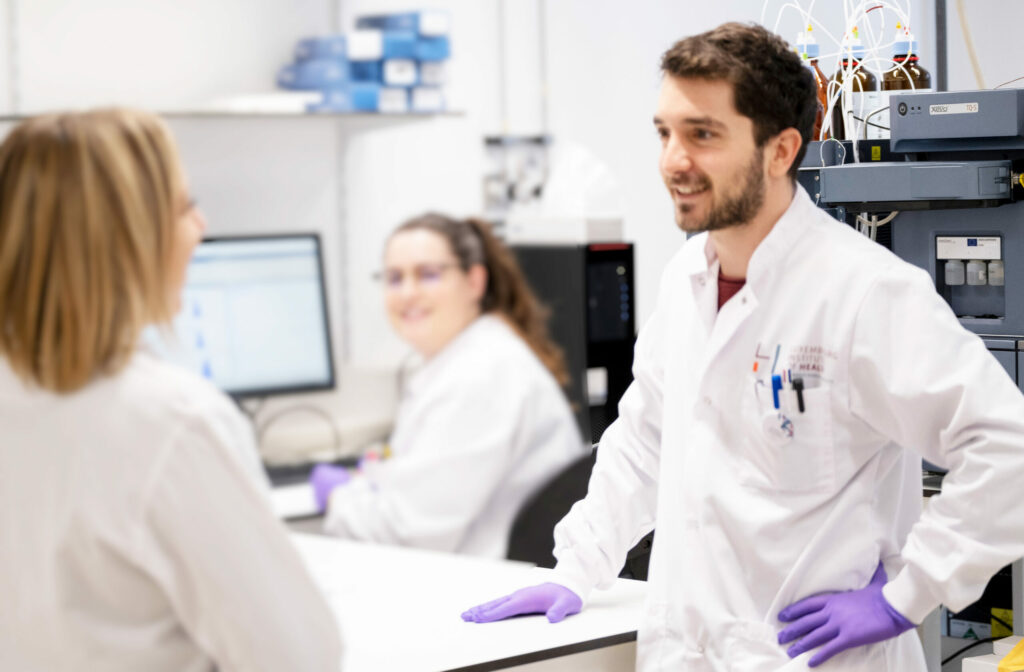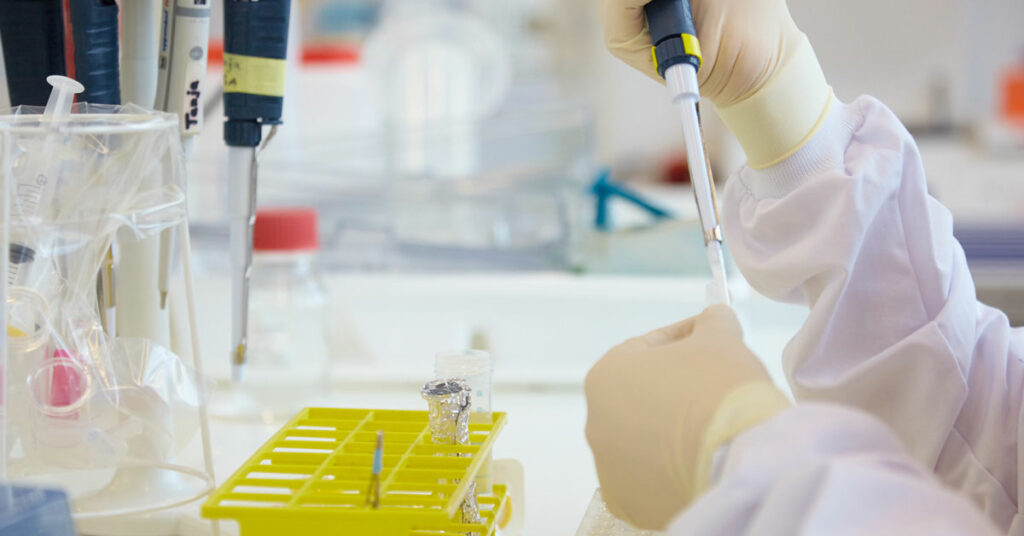
luxembourg center of neuropathology
The LCNP research unit at the LIH targets different aspects of brain tumour biology.
The LCNP research unit at the LIH targets different aspects of brain tumour biology.
Brain tumors describe the abnormal growth of tissue in the brain or the central spine that leads to a disruption of proper brain functions. Brain tumors can arise directly from cells within the brain (primary brain tumors) or derive from metastatic cells of peripheral tumors (metastatic or secondary brain tumors). The treatment of brain tumors is difficult due to the delicate localisation within the central organ of the human nervous system. Accordingly, current research is strongly focused on improving treatment strategies to enhance affected patient survival.
Glioblastoma (GBM) is the most malignant primary brain tumor. Despite standard therapy, median patient survival is around 14 months, with relapses being frequent. This is due to tumour evolution, the clonal heterogeneity and the highly infiltrative character of a subset of tumour cells. It is a general notion that such subsets of pro-invasive tumour cells have distinct genetic signatures compared to cells of the tumour core.
activities
The Luxembourg Centre of Neuropathology (LCNP) under the direction of Professor Michel Mittelbronn was established in collaboration with the Luxembourg Institute of Health (LIH), and the Luxembourg Centre for Systems Biomedicine (LCSB) of the University of Luxembourg (UL). The LCNP research unit at the LIH targets different aspects of brain tumour biology.
The “Identification and characterisation of invasion-promoting genes in GBM” project aims to identify genes and downstream molecular players defining the infiltrative capacities of GBM tumour cells to reveal novel therapeutic targets for improved GBM treatment.
Tumorigenesis of brain tumours is not only driven by cell intrinsic mechanism but also strongly influenced by the tumour microenvironment. Amongst others, microglial brain immune cells are the most common cellular entities that interact with the GBM tumours representing up to 30–50% of the tumour mass. Tumour cells have been shown to interact with immune cells of the brain creating an immunosuppressive microenvironment. Our “Contribution of microglial reprogramming to glioblastoma progression: exploring DNA methylation” project addresses the question of epigenetic changes in microglia following interaction with GBM tumour cells. We assume that these epigenetic changes might cause the tumorigenesis promoting phenotype of brain microglia. We expect that further knowledge of the microglia-GBM crosstalk will be the basis for potential therapeutic strategies for improved treatment of brain tumours in general, and furthermore, pave the way to prevent the initiation of glioblastoma development in patients at risk to develop those tumours.
Metastatic brain tumours are associated with significant morbidity and mortality. Melanoma is one of the most frequent causes of secondary brain tumours. One critical stage leading to brain metastasis is the migration of cancer cells through the Blood-Brain-Barrier (BBB). Within the “Mechanism of brain metastasis in melanoma“ project, the LCNP research unit aims to decipher which processes metastasising cells undergo when passing the BBB. Here, the unit intends to identify components that can be targeted in order to prevent the formation of brain metastases.
One of the major obstacles brain tumour treatment faces is the total surgical resection of all tumorigenic cells. The infiltrative capacity of several brain tumours prevents complete eradication of cancer cells and in contrast to many tumour entities in the periphery excessive brain tissue removal is impossible. The capability of precise differentiation between healthy versus tumour-cell-invaded brain tissue during surgery is therefore essential for the therapeutic success of brain tumour patients. “The use of Raman spectrometry in brain cancer diagnosis” project is a promising approach to improve intra-operative diagnostics. By collecting Raman spectra of brain tumour cohorts and further relate obtained data to neuropathological parameters, this project aims to implement a classification of several brain tumour entities to optimise intra-operative optical diagnostic.

MITTELBRONN
current research projects
Some of the group’s research projects include:
- Mechanism of brain metastasis in melanoma
- Exploring DNA methylation in GBM reprogrammed microglial cells
- Identification and characterisation of invasion-promoting genes in GBM
- The use of Raman spectroscopy in brain cancer diagnostics
Related News

Job vacancies
There are no jobs matching this page at the moment. You can view all jobs via the button below.


